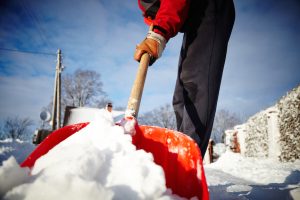 To prepare for inclement weather, a winter plan should be put together with an associated risk assessment. This should be carried out well in advance, and revisited and revised throughout the cold period.
To prepare for inclement weather, a winter plan should be put together with an associated risk assessment. This should be carried out well in advance, and revisited and revised throughout the cold period.
To make sure everyone understands what is expected of them, and to ensure the plan is as streamlined as possible, it should be completed alongside other areas of the business — for example HR, IT and the communications team. As part of any planning process, include a review of what happened last year so that new approaches can be adopted where processes were less than ideal.
Some areas that could be addressed as part of winter planning are outlined below.
Communication with employees
Staff need to know what is expected of them when bad weather strikes, as well as what they can expect from the organisation. From an HR point of view, it is important for staff to clearly understand what the consequences are of not being able to attend work, for example due to transport disruption or emergency childcare requirements. On the other side of the coin, facilities managers also need to plan for what happens if, for any reason, staff should not come into work, for example if a building loses power or if the heating system goes down.
Communicating with staff is key in these instances, so make sure that the communication plan is clear, approved, and aligned with communication from other departments. Also ensure that managers are on board and understand what is required.
Preventive maintenance
Bad weather and high winds can expose any building flaws, especially in areas such as roofs or windows. Before winter comes, carry out a condition survey to identify any potential problems, and prioritise them for repair.
Similarly, regularly inspect heating systems and any other plant required for emergencies, such as back-up generators. Proactive maintenance and regular inspections will help reduce the chance of failure when these bits of kit are most needed.
Slips and trips
Snow and ice are two obvious winter problems that can be a hindrance to any business. Make sure that supplies of grit are fully stocked, and that weather warnings are regularly checked so that the grit is used when needed. Staff employed to spread grit need proper personal protective equipment (PPE).
Do not forget inside the building too — staff bringing snow and ice in on their shoes can create slippery surfaces, so consider adding extra mats at the front doors to help keep the building clean and to absorb any extra wetness.
Also remember that slips and trips are not just isolated to times when snow falls. Darker mornings and evenings can cause more accidents, as can autumnal leaf fall. As part of maintenance checks, ensure external lighting is adequate and that entrances and pathways are kept clear of leaf litter and debris.
Staff working outdoors
As part of the maintenance team there might be people who are regularly working outdoors. Although minimum working temperatures do not apply for these workers, there is, however, still a duty of care to ensure that people are not working in unsafe conditions. This could mean that managers need to look at rotas to avoid staff working outside in the cold for long periods of time, as well as making sure there are adequate facilities for people to warm up and take a break. Additional PPE to account for the weather can also be appropriate — for example, having extra dry items of clothing and good waterproofs to help people stay warm.
Remote working
Part of the winter preparation might include making sure that people are able to work effectively from home. This might include checking that all staff have the relevant logins and permissions to access work servers remotely. As some staff might not regularly use these systems, ask everyone to check that they can work remotely ahead of time.
Equip fleet vehicles
Make sure fleet vehicles (including grey fleet vehicles) are prepared for winter conditions. This means making a considered decision as to whether winter tyres are necessary, as well as asking staff to undertake some basic checks on weather and road conditions before deciding to drive. It is also a good idea to put together a car “winter pack”, including a blanket, in-car phone charger and snow shovel. Staff can supplement this with personal items that could include warm clothing and food in case they do break down or are stuck on a motorway.
Managing sickness
Along with bad weather comes the dreaded winter flu. Facilities managers can play an important, if not visible, role in reducing the impact of staff illness spreading, for example by stocking up on soap and alcohol gels. It is also a good time to run a check on cleaning schedules to make sure that common areas are being properly, and thoroughly, cleaned to help reduce the spread of germs.
Furthermore, don’t forget that winter doesn’t always mean catching a cold. For some, it can also bring about the onset of Seasonal Affective Disorder (SAD) as well as a propensity for less exercise and a change in diet. Keep this in mind — perhaps renew or re-launch any wellness campaigns, or work with caterers to develop hearty, but healthy, meals for the winter menu.
Contact us if you require further information.